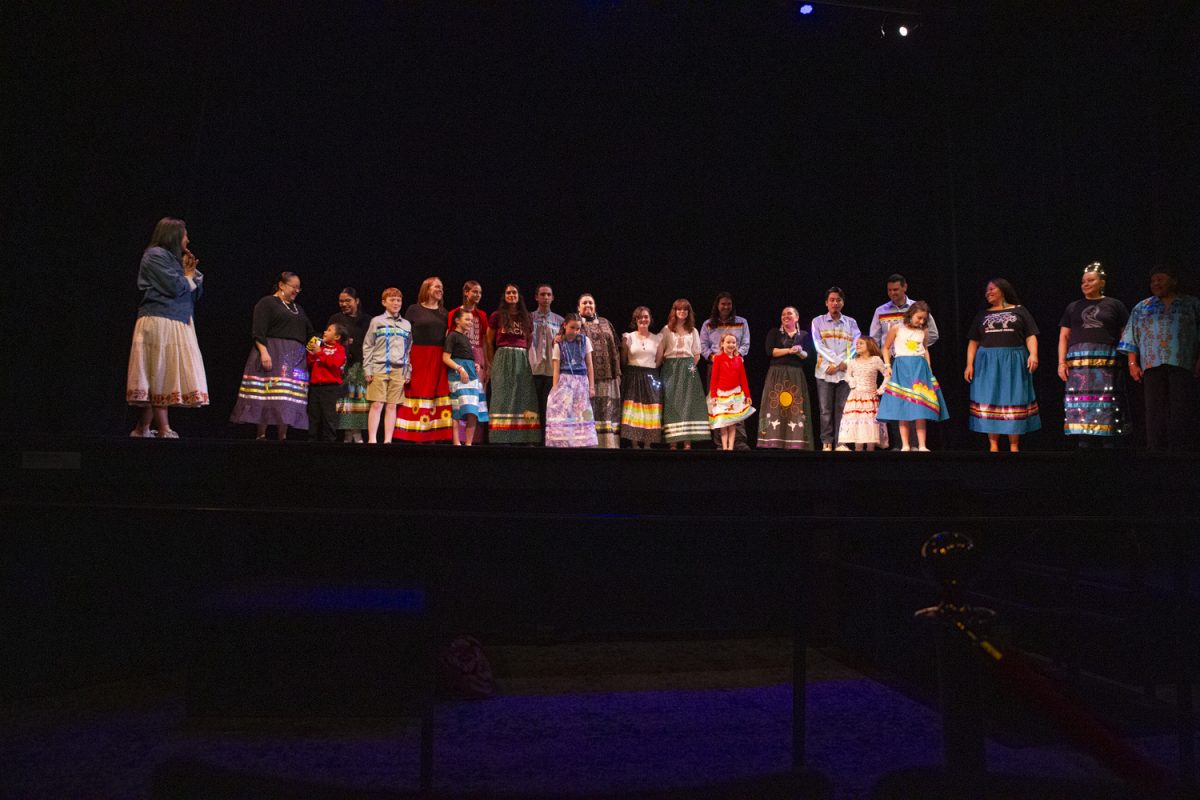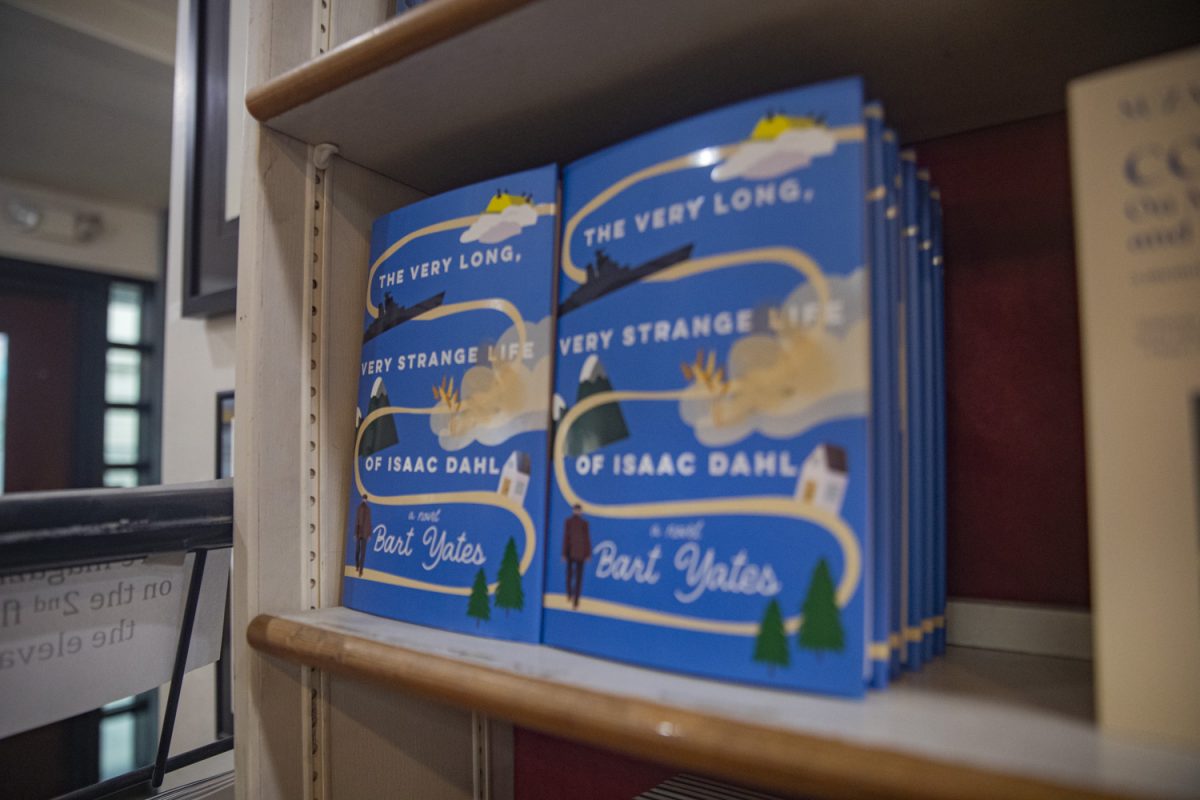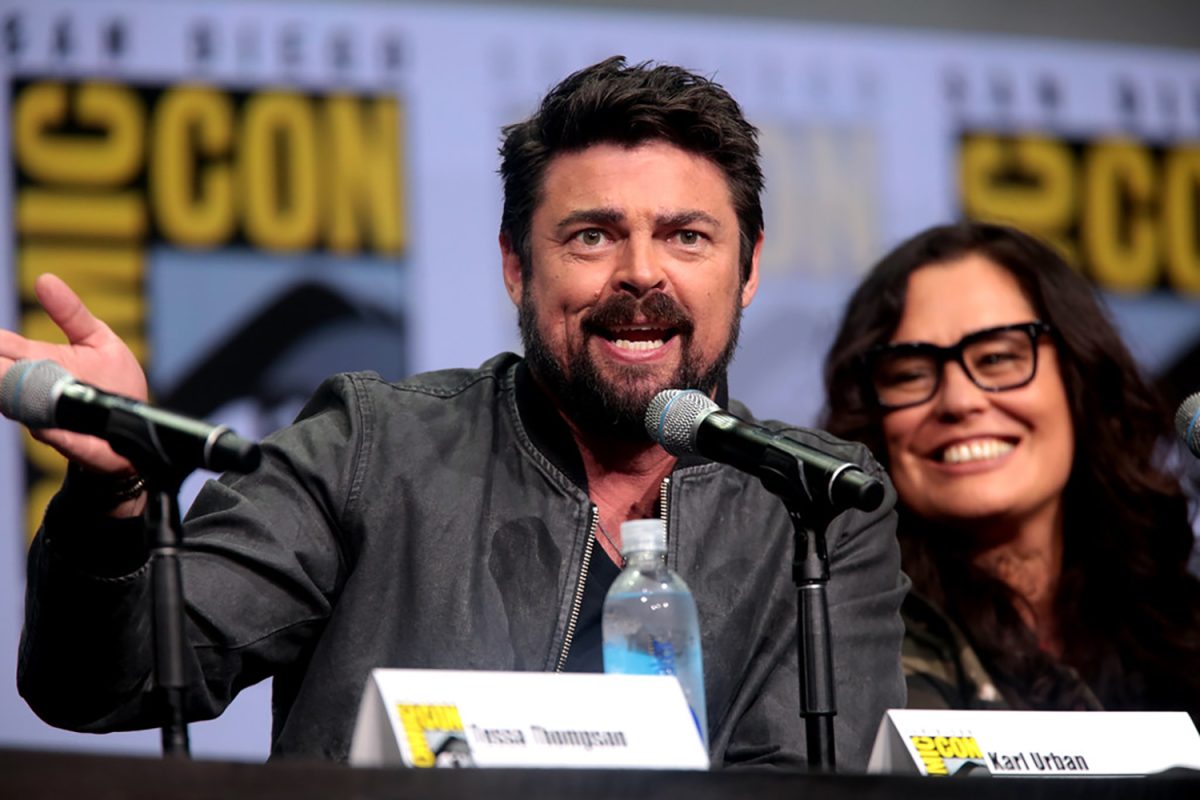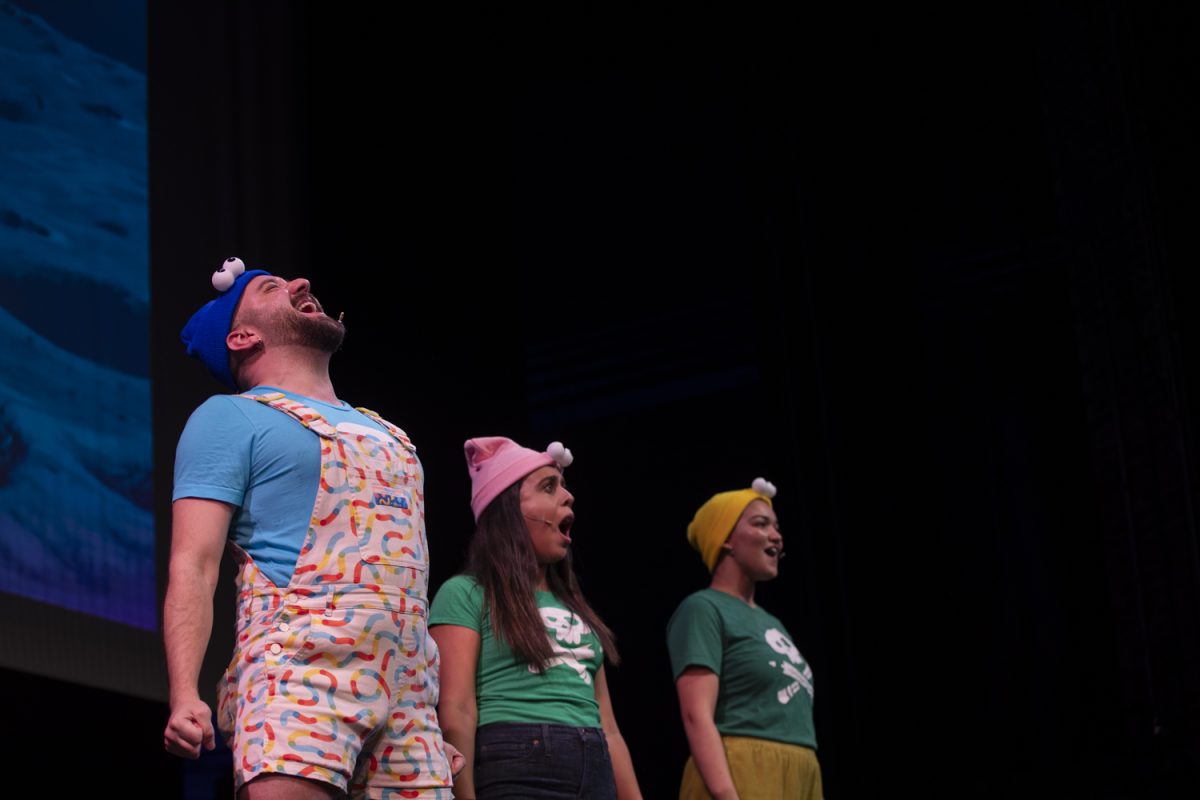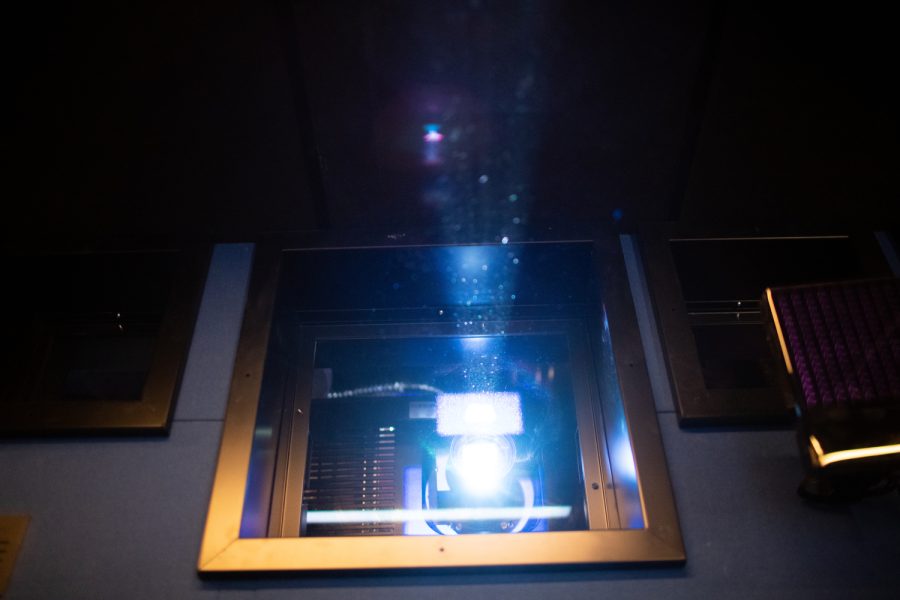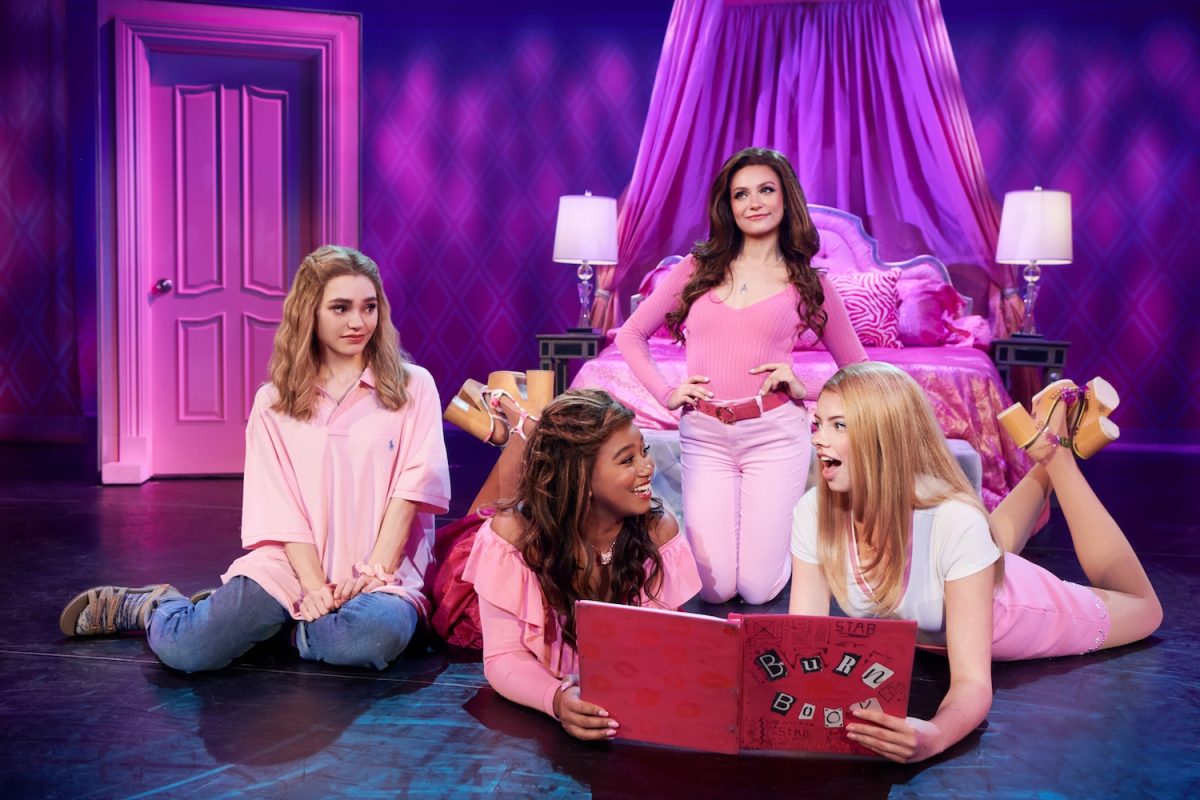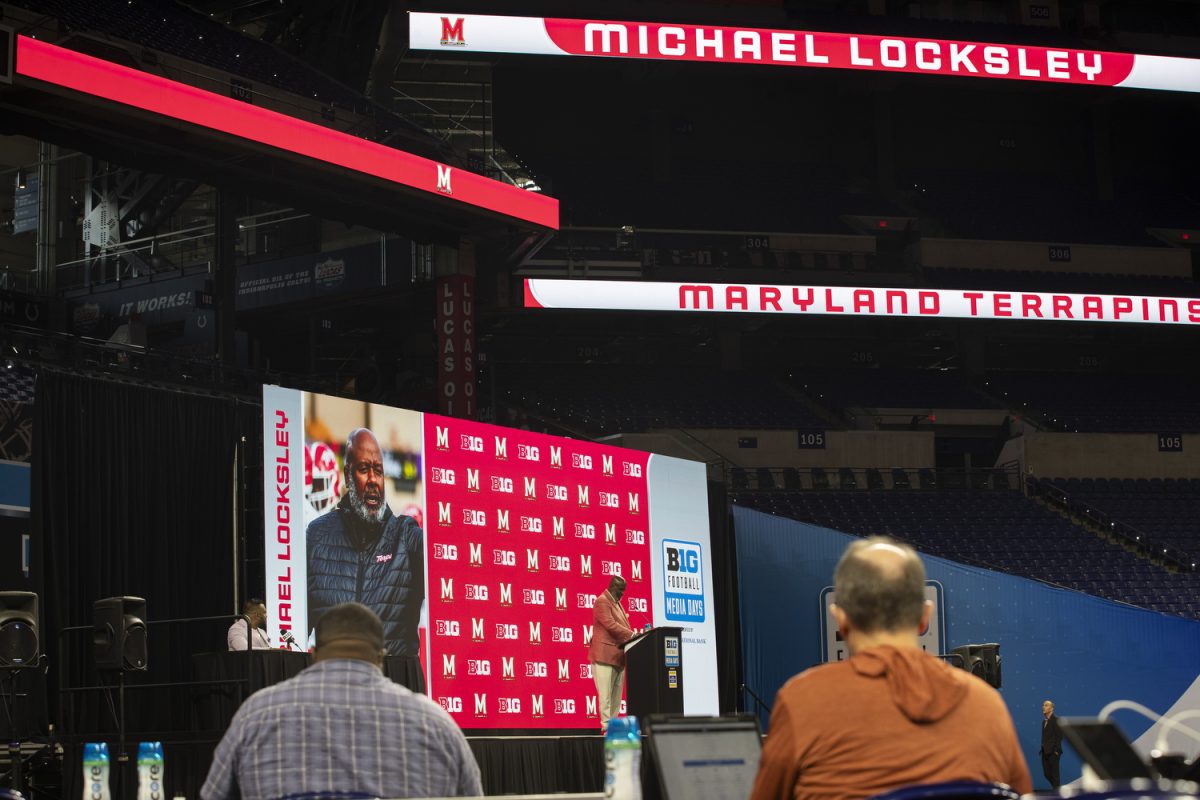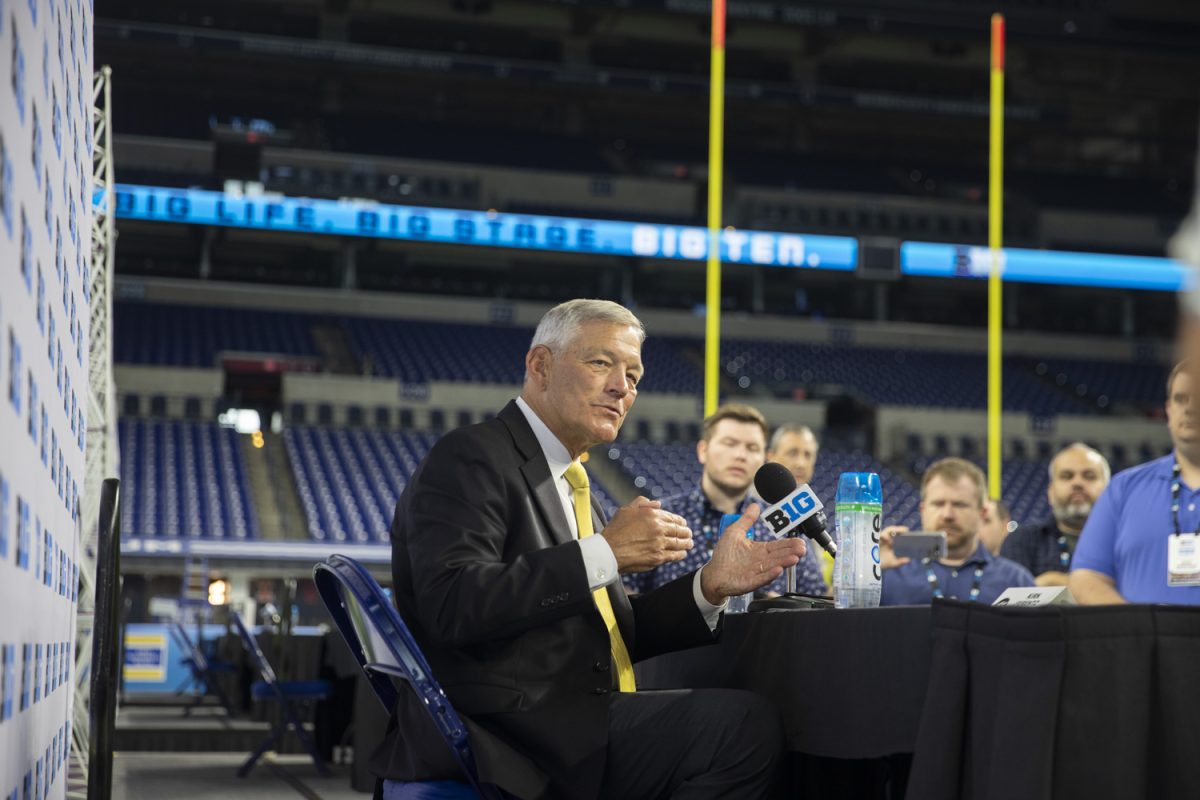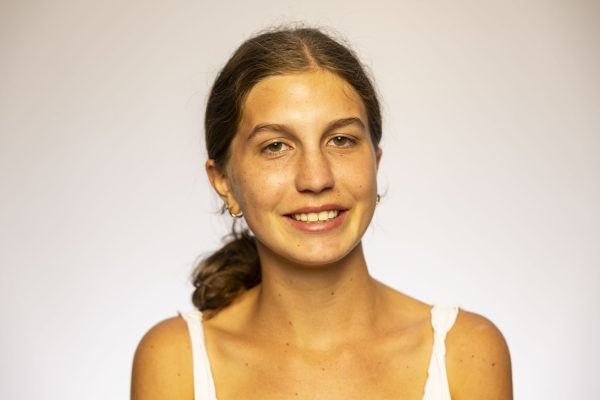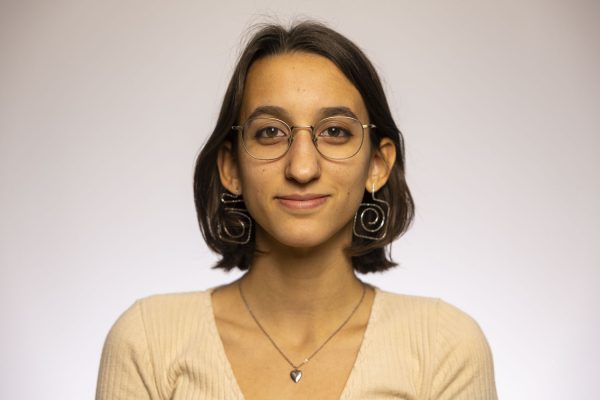Models at “The Future is Indigenous” fashion show strutted the Englert Theatre stage on April 27 donning ribbon skirts and shirts, every piece telling its own story. As the stage went dark, the pieces lit up, illuminating the space with a multitude of colors.
Alicia Velasquez, an Apache and Yaqui Iowa City-based artist and designer, was inspired to create the event and fashion show to redefine Indigenous art from its stereotype.
“For some reason, society has not allowed Native Americans to evolve,” Velasquez said. “They keep us back in the 1800s with all the frames and the beadwork and all that, and there’s nothing wrong with that, but if we want to create new art, we should be allowed to, and be able to be put in certain spaces.”
Velasquez started the idea for “The Future is Indigenous” fashion show. The event combined Native American fashion — ribbon skirts and shirts, and clothes worn during Indigenous ceremonies — with technology displayed during the fashion show, including colorful LED lights.
“The idea came about when I was at one of my art shows, and Native American artists stopped at my booth and we were talking, and they said that they’re artists themselves,” Velasquez said. “But they don’t identify as Native American artists because they don’t do the stereotypical Native American art, and ‘stereotypical’ meaning what the movies and society and all that depicting what Native American art should be.”
The project received funding from a Community of Engaged Scholars Program grant from the University of Iowa Office of the Vice President of Research. The grant, worth up to $5,000, supports projects where the university collaborates with the community.
Kirk Cheyney, the director of operations for the Iowa City Fab Lab, helped Velasquez implement the technological aspects, including adding lights to the pieces.
“It shows that Indigenous art is ever-changing,” Cheyney said. “It’s like any other culture. It’s a living culture … A lot of times people think of feathered headdresses and the old stereotypes, and we wanted to show that this is a living culture that can change and grow with new technology.”
He believes the event and addition of technology show the possibilities of Native American art in the present day.
“If they’re Indigenous and they do art, it is Indigenous art,” Cheyney said.
Over the past two months, members of Indigenous communities around the country enrolled in sessions with Velasquez to create ribbon shirts and skirts for the fashion show. They learned how to sew, create the pieces, and add the lighting technology.
“It’s been a really amazing process to be able to share the teachings that I was taught to me by my elders and my family, to share that with other Indigenous people and to be able to bring it to fashion-forward to where we are putting technology into that,” she said.
Kay Ramey, an assistant professor in learning sciences and educational psychology at the UI, helped plan the workshop and event with Velasquez, Cheyney, and UI anthropology professor Margaret Beck.
Ramey saw the workshop as an opportunity to engage young people in the community and get people in touch with traditional Native American art and culture while also bringing in modern tools and technology.
“It’s been great to see the creativity that everyone brought to the projects and a highlight from talking to some of the participants was how nice it was to have [the workshop] be so open where they could take [their pieces] in a lot of different creative directions,” Ramey said.
Marianna Cota, a recent graduate of the UI and a member of the Pascua Yaqui Tribe of Arizona, felt appreciative for the opportunity to participate in this workshop.
“We also got to learn from and about other people’s journeys in either reconnecting or strengthening their connection with their identity, particularly the Native or Indigenous aspect of their identity,” Cota said.
During the fashion show, ribbon skirts and shirts were displayed as participants walked down the runway. During the panel, each person who created a piece explained its meaning to the crowd.
Velasquez described one participant’s ribbon skirt, which included sunflowers to symbolize her children and show motherhood.
“Each color represents something to the participant — putting lights on there or putting applications on there also tell a story,” Velasquez said.
In Cota’s piece, she included flowers as they are important to Yaqui culture and represent renewal, sacrifice, and a celebration of life. She also included cacti to pay homage to the desert landscape from which her people came.
“My grandmother, who I refer to as Nana, also really loves butterflies and hummingbirds like myself,” Cota said. “It’s another one of those things on my skirt representing the important relationships in my life as well.”
Mary Binzley attended the event to support her friend who was participating in the show. She said her favorite part was seeing all the different pieces people made.
“I liked how people who were in the same family would sometimes stay up on stage together, and it was cool to see different generations [and] why they chose their designs,” Binzley said.
Velasquez believed the event helped the public see Indigenous art and culture in a new light.
“One thing I want people to understand is that we are still here as Native Americans. We are still here,” Velasquez said. “We’re not a ghost. We are not an endangered species. We are not something of the past. We are here and we are evolving in our ways.”





